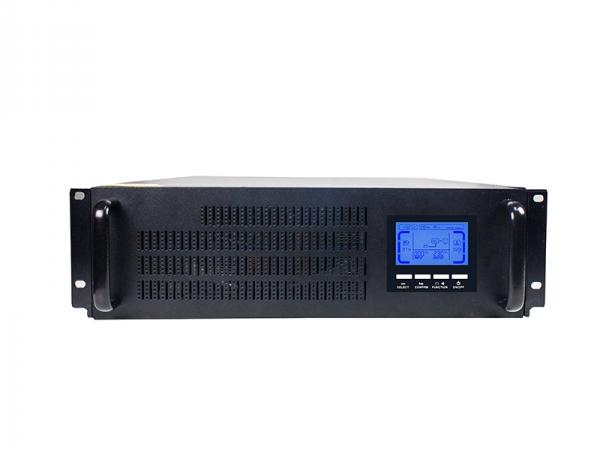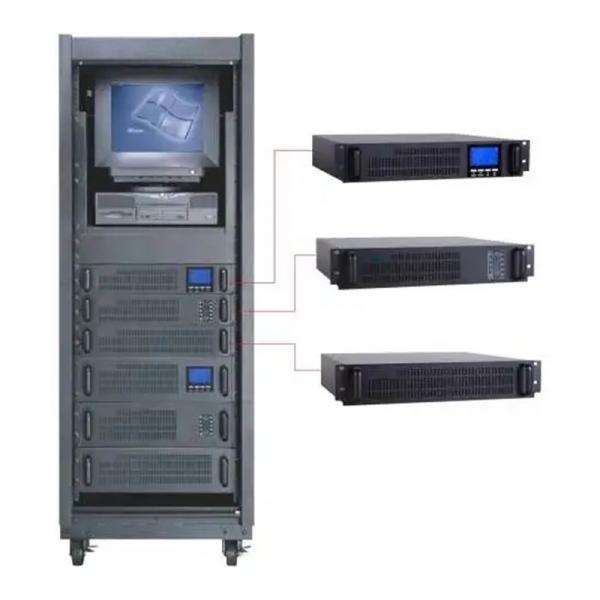

An emergency UPS (Uninterruptible Power Supply) is like the quiet bodyguard of every facility that can’t afford a sudden blackout. When power cuts hit, it jumps in within milliseconds, keeping the lights on and systems alive. Think of data centers, hospitals, and control rooms—places where a few seconds of downtime could mean chaos or loss.
Even the best UPS can’t work forever without care. Batteries dry up, fans slow down, and circuit boards get tired after years of heat and dust. One loose terminal or neglected alarm could leave an entire floor of machines blinking helplessly in the dark.
So here’s a practical rundown—11 down-to-earth ways to keep your emergency UPS ready for the next outage.
Before touching anything, slow down and think safety. A UPS isn’t like swapping out batteries in a remote; it stores serious energy. Always shut down power sources before removing panels. Even a “dead” system can hold charge for several minutes.
Only trained technicians should be poking around inside. Components like IGBTs or capacitors can zap or crack if handled roughly. Gloves, goggles, and non-conductive shoes aren’t optional gear—they’re your best friends in this line of work. No deadline is worth a shock.
A lot of UPS failures trace back to skipped checkups. It’s not rocket science, just regular attention.
l Weekly: Take a quick look. Any dust clogging vents? Any alarms lit up?
l Quarterly: Check battery voltage and internal resistance.
l Yearly: Run a full load test and see how the system behaves under stress.
If a site’s getting hotter or dirtier—say, an industrial warehouse during summer—tighten the schedule. Some techs even mark small color stickers on cabinets to track inspection dates. Simple but effective.
Every check should leave a paper trail. Write down what was inspected, who did it, and what was found. Digital forms make this easier, but a plain clipboard still works fine on noisy factory floors.
Patterns show up over time. Maybe two batteries keep failing every winter, or the same capacitor gets replaced every two years. Those small clues often reveal bigger issues—poor cooling, uneven charging, or vibration.
UPS units hate dirt, humidity, and heat. During inspection, pull off the front grille and look for dust piles on fans. Check for corrosion on screw terminals—greenish stains usually mean trouble.
A UPS rated for 110–300 Vac input range might sound forgiving, but it’s still vulnerable if airflow’s blocked or the room runs over 30 °C. You’d be surprised how many failures come from cardboard boxes stacked against vents.
If the LCD screen flashes a warning, don’t just silence it. Most alarms start quietly—a small voltage drift or fan speed drop—but they’re early signs of trouble.
Battery systems are like the heart of a UPS: strong at first, but they wear down faster than people think. Check the voltage of each block quarterly and record the values. A spread larger than 0.2 V between cells usually deserves a closer look.
Every three to five years, replace the entire pack. Some newer batteries can last up to 3,500 cycles—roughly five times longer than lead-acid ones—but only if kept cool and clean. Real-time monitoring tools can alert you when internal resistance climbs or temperature spikes.
One factory manager once said the UPS told him it was “fine” right before half the pack died in the middle of a shift. That’s why testing under load matters.
Nothing inside a UPS lasts forever. Fans grind down, relays pit, and capacitors slowly lose charge-holding ability. A good rule: replace critical parts before they hit their rated lifespan.
Preventive swaps save money in the long run. It’s easier to change a fan on a Friday afternoon than during a midnight outage. Some upgraded digital circuits can extend lifespan by about 80 percent, but even those need attention.

When things go wrong, minutes count. Keep a printed list of service contacts taped inside the UPS room door. It sounds old-fashioned, but in the dark, when Wi-Fi’s down, that paper list is gold.
Have a service contract that spells out response times. A two-hour SLA can feel like forever when servers are blinking, but it’s better than calling random electricians who’ve never touched a three-phase UPS.
Everybody says they’ll handle the UPS, and then nobody does. Avoid that trap. Name specific roles:
l Facility manager: keeps track of schedules and approvals.
l Electrical engineer: handles diagnostics.
l External tech: performs deep inspections.
At shift change, have a short handover—what alarms popped up, what was fixed. A small whiteboard by the UPS cabinet works wonders.
Simulate a real power cut at least once a year. Watch how fast the UPS switches to battery mode and how stable the voltage stays. Note if fans ramp up too slowly or alarms lag.
Check synchronization with generators or ATS units. If you see more than 5% distortion in output during load transfer, the system might need recalibration. This kind of real-world testing often reveals hidden firmware bugs or loose connectors.
UPS systems have become smarter, with firmware that tracks everything from battery health to temperature drift. Updates fix bugs and improve stability—but only if someone installs them.
Recurring alarms shouldn’t be brushed off. “It’s just a sensor glitch” usually isn’t. After each event, pull up the logs and read what really happened. It’s a small job that prevents bigger ones later.
Keep a small stash of essentials—fans, control boards, battery fuses. Waiting weeks for a single part during a power emergency can shut down an entire production line.
Check the manufacturer’s support timeline. After about eight to ten years, many UPS models stop receiving parts or firmware. Don’t wait until that notice lands; plan an upgrade path early. Modular UPS designs, like hot-swappable types, make replacements faster and cleaner without shutting the whole system down.

Taking care of an emergency UPS isn’t glamorous work, but it saves a lot of late-night headaches. Companies like ZLPOWER build solid systems, yet even the toughest hardware needs regular care.
A few hours a month for checks, records, and cleaning beats the cost of a surprise shutdown. Dust off the logbook, look at the last inspection date, and schedule the next one before you forget. Your future self—and your powered-up machines—will thank you for it.
A: Do quick checks weekly, test batteries quarterly, and run a full-load test once a year. More if the environment’s hot or dusty.
A: Usually three to five years. High-end lithium models can go past 3,000 cycles when kept cool and charged properly.
A: Visual inspections and cleaning, yes. Anything involving panels, batteries, or wiring should be done by trained personnel.
A: Around the 8–10 year mark, or sooner if parts become unavailable or efficiency drops. Older models can be swapped for modular ones to reduce downtime.